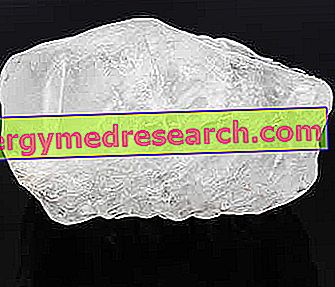
Stretch marks: what are they?
Stretch marks, more appropriately called "striae distensae", are alterations of the surface of the skin generally linked to pubertal development and pregnancy.
The original scientific term, striae distensae, was coined by Roderer, who described them in 1773; however, it was only in 1867 that Koestner analyzed them from the histological point of view and, after observing the atrophic characteristics of the affected tissue, attributed the term "atrophied striae" to these alterations of the skin.

Signs, Symptoms, Localization
The "striae distensae" have been known since ancient times and represent one of the most frequent imperfections affecting the female sex. They appear as longitudinal streaks or slightly depressed grooves, parallel to each other and more frequently localized to the lateral wall of the abdomen and / or to the lateral surface of the thighs, separated by sections of healthy skin. They consist of atrophic skin of variable color depending on their evolutionary phase. Initially pink in color that turns violet (inflammatory phase), stretch marks later take pearly shades (cicatricial phase).
Stretch marks have a bilateral localization and can appear in every part of the body with a characteristic orientation that depends on the area affected. In particular, they follow precisely the lines of Langer, lines according to which the fibers of the superficial muscular bands are arranged, to be followed in the case of surgical incisions, in order to avoid phenomena of scar retraction. The width of stretch marks varies from a few millimeters to 1-2 centimeters, while their length exceeds 15-20 centimeters; iatrogenic lesions (due to topical and systemic cortisone therapies) are often distinguished by larger dimensions.
The age of onset and the location of stretch marks vary according to sex.

One of the factors responsible for this phenomenon is "hormonal evolution" in the 3rd and 4th decades (it is known that estrogen has a negative effect on collagen synthesis) which leads to a considerable increase in the incidence of pathology in women. Substantial differences are evident between the two sexes also at the level of localization. In humans, the striae are observed at the level of the lumbo-sacral region, the abdomen, the thorax and the buttocks. In women we typically find them on the buttocks, on the outside and inside the thigh but above all at the level of the abdomen and breast.
The situation is different for stretch marks of iatrogenic origin, which appear only on the site of application of the treatment, in the case of corticosteroid drugs, or in correspondence with cutaneous areas subjected to tension and mechanical stress, as in the case of sutures or specific aesthetic interventions (eg : breast augmentation).
In almost all cases, striae distensae arise as a problem only from an aesthetic point of view, but can lead, especially in adolescents, to psychological distress of considerable magnitude.
Article Index
Causes and Risk Factors Stretch Marks in PregnancyPreventing Stretch MarksDermo-cosmetic treatment of stretch marksActive active ingredients against stretch marks Chemical peelingStretch marks, Hyaluronic acid, Betaglucan, LaserCauses and Risk Factors
The striae distensae are due to damage at the level of the dermal connective tissue, which is associated, at the beginning, with inflammatory phenomena and then evolves in a cicatricial sense. They represent a definitive skin alteration, caused by the action of mechanical stresses of a relaxing type (stretching) on skin with a reduced capacity of resistance due to constitutional, hormonal and mechanical factors.
Constitutional factors
the family's predisposition to stretch marks is ascertained and their presence is characteristic in some genetically determined diseases, in which the hereditary defect affects the connective, such as the Marfan syndrome.
Stretch marks and Cortisone
Steroids represent the determining pathogenic factor in the pathogenesis of iatrogenic striae distensae. Among the numerous effects of steroids the most important is the atrophy, both of the epidermis and of the dermis, with reduction of the proliferative activity of the fibroblasts and consequent structural modification of the collagen fibers and the fundamental substance.
The main characteristics of the striae resulting from systemic cortisone therapy, from anabolic steroids or from the use of steroid molecules for topical application, are the speed of onset, the appearance in unusual sites and the generally more marked clinical aspect. In the case of topical treatment, the extent of the event is dependent on the power of the steroid applied, the number of applications, the mode of use and the site of application (which is in relation to the index of transepidermal penetration).
Mechanical factors
Stretch marks appear when there is a sudden change in the adipose panniculus or in the circumference of some parts of the body: for example, due to pregnancy, breastfeeding, tight clothing, excessive physical activity, sudden changes in weight, due to drastic diets, malnutrition, debilitating diseases, or anorexia nervosa: in these conditions, probably, atrophy of the dermis is mainly caused by an increased steroid secretion.
The onset of striae is closely related to obesity .
The mechanical factor, however, acts in synergy with hormonal and constitutional mechanisms, as is shown by the fact that the stretch marks that form in the greatest number of pregnancies, are related not so much to the increase in the circumference of the abdomen as to the increase in weight, to the pre-existence of puberal striae and genetic predisposition.



